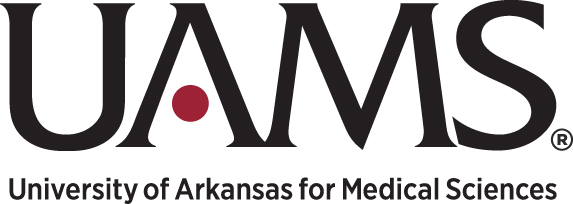Newswise — LITTLE ROCK – University of Arkansas for Medical Sciences (UAMS) researcher Vladimir Zharov, Ph.D., D.Sc., recently was awarded a $1.5 million R01 grant by the National Institutes of Health to investigate his diagnostic concept — “In vivo reading written in blood” — with new stimuli-responsive nanoparticles circulating in blood.
Zharov is director of the Arkansas Nanomedicine Center at UAMS and a professor in the UAMS College of Medicine Department of Otolarynology-Head and Neck Surgery. “We will synthesize new photoswitchable nanoparticles which can change a color under laser light and test them in different biological environments,” said Zharov. “We also want to see how these nanoparticles interact with circulating tumor cells in blood. When these nanoparticles with drugs called nanodrugs are inside cells, and we apply laser radiation, the resulting nanobubbles around nanoparticles dramatically enhance drug action to kill cancer cells.”
Earlier research by Zharov used gold nanoparticles with attached antibodies for the targeting and detection of many circulating tumor cells directly in blood stream. New photoswitchable nanoparticles provide the opportunity to label a few or even single cancer cells and track their movement in the body to better understand how cancer spreads and creates deadly metastasis. In this process, a laser that is safe to use with humans heats the nanoparticle to change it to a specific color for labelling and tracking the cancer. Laser pulses can cause the nanoparticles to produce sounds that also allow for detection.
Researchers at the Photonics Center at Boston University recently confirmed Zharov’s findings of an ultrasharp switchable nanoparticle color and were able to split one color into two sharp colors. They named this effect “Zharov splitting.”
“The different colors allow for more specificity in tagging,” Zharov said. “We can create multiple colors from blue to red and in near-infrared range. Light in the near-infrared range is better able to pass through biotissue, and that makes it easier to diagnose deep in blood vessels. Right now in cancer research, fluorescent proteins are used that provide only two switchable colors in the visible range. Gold nanoparticles providing multiple colors are safe for use in humans, and fluorescents aren’t. With nanoparticles, we can produce 10 to 20 very distinct colors. We can switch the color. With Zharov splitting, we can double the number. It’s a new phenomenon in optics.”
Zharov splitting will provide insight into the poorly understood mechanisms of early metastatic disease and could help develop advanced diagnosis techniques and individualized therapies. This ability can enable the research community to discover and assess the physiological and pathological mechanisms related to health and diseases, including studies of immune system function, bacteremia, sepsis and clotting making at the single-cell level. Thus, this technology makes single cell analysis in circulation feasible.
When nanoparticles are combined with anti-cancer drugs, they also can be heated in such a way as to make the drugs — called a photothermal nanodrug — more effective. Further research by Zharov and his team, funded by the new grant, will look at expanding this exciting research.
“By attaching the drug molecules to nanoparticles, we can enhance their efficiency,” Zharov said. “When we use lasers to irradiate these nanoparticle-drug conjugates called nanodrugs, it significantly improves the drug’s action. In particular, we enhance the local nanoparticle surface temperature that activates the drug’s performance and the drug is released at a specific intracellular location. Thus, this ‘nanodrug bullet’ can reach temperature- and drug-sensitive cellular nanostructures (e.g., organelles or nuclei) that are resistant to drug at conventional conditions. In addition, laser-induced nanobubbles can improve drug delivery and mechanically can enhance cancer cell destruction, providing synergy of physical and biochemical anti-tumor effects. Photoswitching of laser-induced nanobubbles around nanoparticles from dark to bright states (i.e., from off to on) by changing the energy level or wavelength provides for more accurate nanodrug location inside cells.”
In addition, lasers can heat the nanoparticle so that it expands, creating a nanobubble. That also improves drug delivery and destroys cancer cells. The photoswitching of nanobubbles provides for more accurate nanoparticle location inside some cells.
“It is important that nanoparticles are a part of the drug in this approach. They aren’t separate,” Zharov said.
The NIH panel that reviewed Zharov’s grant application gave it the best score (10) and percentile (1) from among all the grant applications it reviewed in its most recent funding cycle.
UAMS is the state’s only comprehensive academic health center, with colleges of Medicine, Nursing, Pharmacy, Health Professions and Public Health; a graduate school; a hospital; a statewide network of regional centers; and seven institutes: the Winthrop P. Rockefeller Cancer Institute, the Jackson T. Stephens Spine & Neurosciences Institute, the Myeloma Institute, the Harvey & Bernice Jones Eye Institute, the Psychiatric Research Institute, the Donald W. Reynolds Institute on Aging and the Translational Research Institute. It is the only adult Level 1 trauma center in the state. UAMS has 2,890 students and 782 medical residents. It is the state’s largest public employer with more than 10,000 employees, including about 1,000 physicians and other professionals who provide care to patients at UAMS, Arkansas Children’s Hospital, the VA Medical Center and UAMS regional centers throughout the state. Visit www.uams.edu or www.uamshealth.com.
